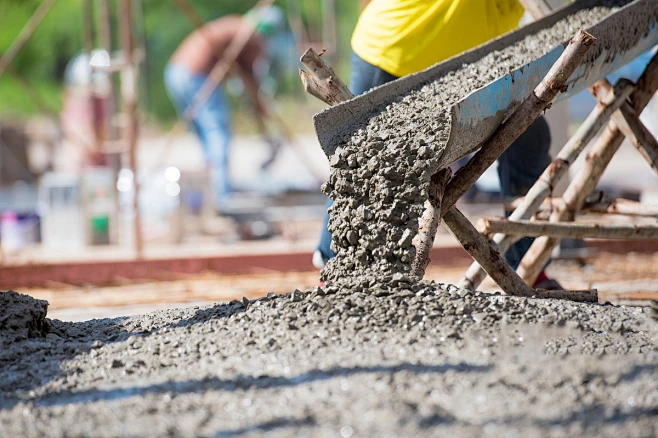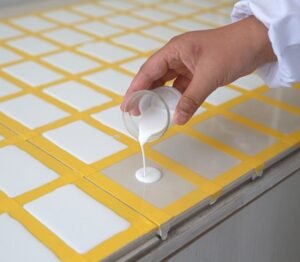In the production and construction of gypsum-based building materials, gypsum retarders play a crucial role as “time regulators.” By delaying the hydration reaction of hemihydrate gypsum to dihydrate gypsum, they provide sufficient time windows for construction operations and product forming. However, with a wide variety of retarder types on the market, each with distinct performance characteristics, understanding how to select the right product for specific scenarios directly impacts project quality and efficiency. This article systematically outlines the classification of gypsum retarders and provides targeted guidance on selection for different applications.
I. Core Classifications and Technical Characteristics of Gypsum Retarders
Gypsum retarders are categorized into inorganic and organic types, each with unique mechanisms and performance traits, suitable for different needs.
1. Inorganic Retarders: Cost-Effective for Basic Scenarios
Inorganic retarders, based on minerals or inorganic compounds, work by forming precipitates with calcium ions or adsorbing on crystal surfaces. They are affordable and widely available, ideal for large-scale applications sensitive to costs.
Phosphates (e.g., sodium phosphate, sodium hexametaphosphate): Form calcium phosphate precipitates to coat hemihydrate gypsum, slowing hydration. With moderate retarding effect (0.1%-0.5% dosage), they minimally affect gypsum strength, making them suitable for plastering mortars made from ordinary β-hemihydrate gypsum, especially for wall leveling in normal-temperature environments.
Borates (e.g., boric acid, borax): Form stable complexes with calcium ions, reducing free calcium concentration, and are more effective for α-hemihydrate (high-strength gypsum). Dosage must be strictly controlled below 0.5% to avoid surface whitening and strength loss, making them ideal for gypsum blocks and precast components requiring high strength.
Sulfates (e.g., aluminum sulfate, ferrous sulfate): Weak retarding effect, mainly adjusting pH to assist coagulation control. Often used as components in composite retarders to balance initial and final setting times, suitable for gypsum putty needing mild retardation.
2. Organic Retarders: High-Efficiency for Complex Needs
Organic retarders, based on natural or synthetic organics, regulate crystal growth through molecular adsorption or complexation, offering stronger, more controllable effects for high-precision scenarios.
Hydroxycarboxylic acids & salts (e.g., citric acid, sodium gluconate): Multi-hydroxyl and carboxyl groups strongly chelate calcium ions and adsorb on dihydrate gypsum active sites. 0.1%-0.3% dosage extends setting time to over 1 hour. Sodium gluconate, with mild retarding and minimal strength impact, is preferred for gypsum plastering mortars and self-leveling gypsum, especially in high-temperature construction.
Natural polymers (e.g., starch, CMC): Slow crystal aggregation via polymer chain steric hindrance, with water-retention properties. 0.5%-1% dosage extends gypsum putty’s open time, preventing surface cracks during scraping, suitable for interior wall decoration.
Synthetic polymers (e.g., PVA, PEG): Polar groups form hydrogen bonds with gypsum crystals, ensuring stable retarding and compatibility with water reducers. Ideal for gypsum 3D printing and precision casting, precisely matching “extrusion-curing” rhythms.
II. Precision Selection for Application Scenarios
Different gypsum-based materials have distinct requirements; selection must align with scenario needs and product traits:
1. Gypsum Plastering Mortar: Balancing Workability and Strength
Key Needs: 30-120 minutes of workability, ≥4MPa compressive strength, avoiding “false setting.”
Recommendation: Sodium gluconate (organic) or sodium hexametaphosphate (inorganic). 0.2% sodium gluconate stabilizes workability at 1.5 hours with <10% 28-day strength loss; sodium hexametaphosphate suits large-area projects.
2. Gypsum Putty: Ensuring Surface Smoothness
Key Needs: Plasticity during scraping, crack-free drying, 30-60 minutes open time.
Recommendation: Starch (0.8%) + sodium gluconate (0.1%) for water retention and extended workability, ideal for interior wall finishing.
3. Gypsum Product Manufacturing (Panels, Blocks): Balancing Forming and Efficiency
Key Needs: 20-40 minutes of slurry flow in molds, ≥2.5MPa flexural strength for panels.
Recommendation: Borax (0.3%-0.4%) for α-gypsum products; citric acid (0.15%) for β-gypsum products, combined with water reducers to offset strength loss.
4. Gypsum 3D Printing: Precise Timing to Prevent Clogging
Key Needs: 1-5 minutes per layer interval, initial setting within 10 minutes post-extrusion.
Recommendation: PEG-4000 + sodium gluconate (total 0.3%-0.5%) for controlled setting, suitable for building component printing.
III. Critical Selection Factors
Gypsum Type: α-hemihydrate requires 30% lower retarder dosage; β-hemihydrate allows higher dosage.
Temperature: Increase dosage by 20%-30% for every 10℃ rise (e.g., sodium gluconate from 0.2% to 0.3% in summer).
Compatibility: Prioritize sodium gluconate when mixing with water reducers or water-retention agents to avoid flocculation.
Conclusion
Selecting gypsum retarders demands integrating material traits, scenario needs, and environmental conditions. Inorganic types suit basic scenarios and cost control, while organic types fit high-precision, complex processes. Precise matching ensures extended workability without compromising mechanical performance-key to optimizing gypsum material applications.



